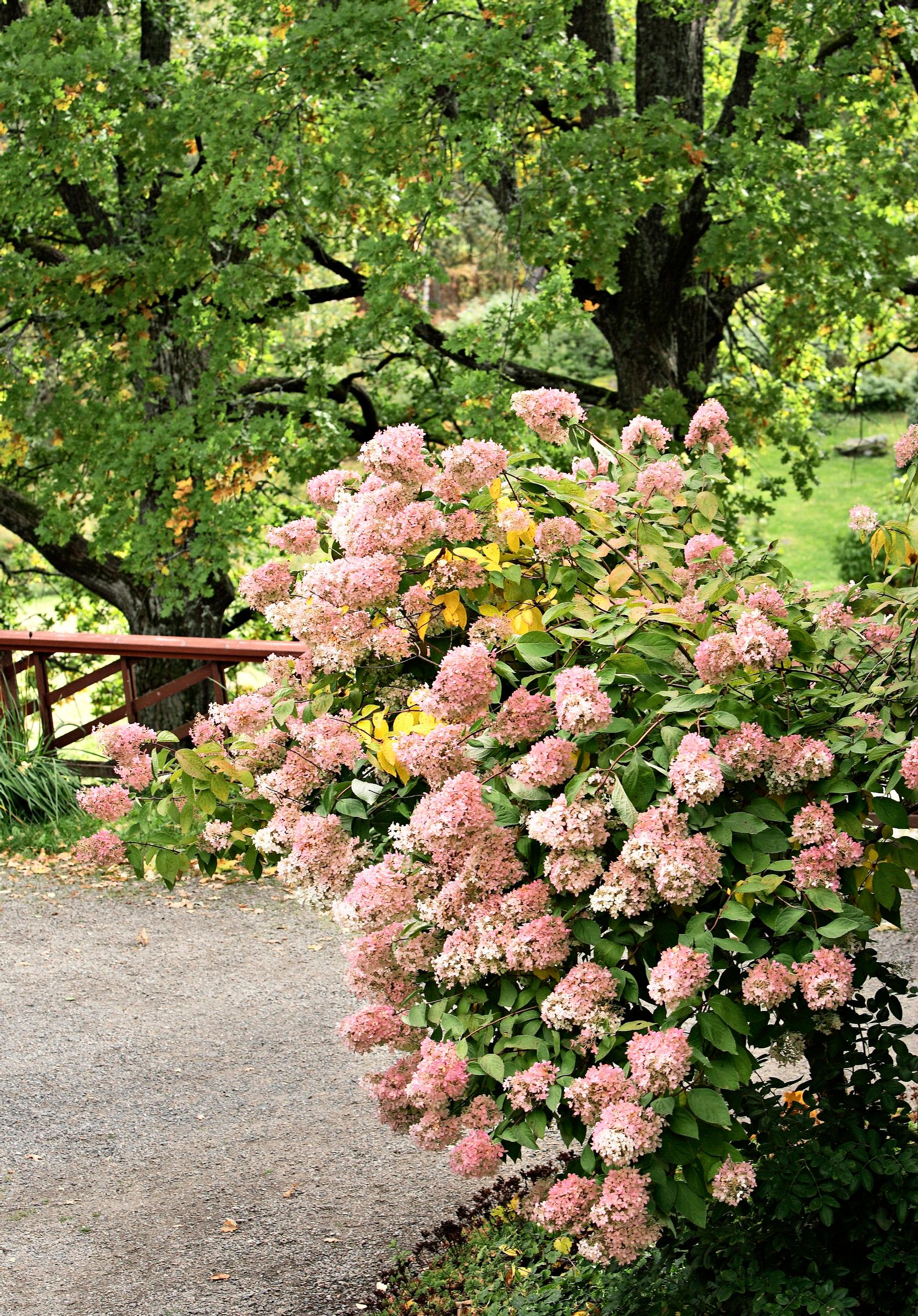
Peegee hydrangea: how to plant and care for the garden’s most enchanting shrub
The profusely flowering panicle hydrangea ‘Grandiflora’, or peegee hydrangea, is one of Finland’s most beloved ornamental shrubs. In autumn, as other blooms begin to fade, the peegee hydrangea shines with its large flowers, which slowly change from white to pinkish hues.
Peegee hydrangea (Hydrangea paniculata ‘Grandiflora’) is striking as a solitary plant and it also works well in groups or hedges. This shrub blooms spectacularly in late summer and autumn. Its large, conical flower clusters consist of small, pollenless flowers. The white clusters blush beautifully as autumn progresses.


The best location for peegee hydrangea
The peegee hydrangea thrives best in acidic and nutrient-rich peat soil. The growing medium should be well-draining, as the peegee hydrangea does not tolerate standing water. A sunny or partially shaded spot is optimal for its blooming. While the shrub does bloom generously even in shady spots, the flowering occurs even later than usual, and in the worst case, autumn frosts may arrive before it begins.
The shrub’s shoots are quite brittle, so it’s best not to plant it in very windy locations or places where snow accumulates. Since the peegee hydrangea’s leaves usually emerge quite late in the spring, you may want to consider planting early-spring perennials at its base.
The peegee hydrangea thrives in hardiness zones I–III (IV). (For information about the Finnish plant hardiness zones, you can read our guide here.) It is recommended for Southern and Central Finland, as in the more northern parts of the plant’s hardiness zone range, it may not always have time to bloom.
Planting the peegee hydrangea
Peegee hydrangeas are usually sold as container plants and they can be planted throughout the growing season—even well into autumn.
The best soil for the peegee hydrangea, which loves acidic conditions, is rhododendron soil, but you can also use garden soil. Dig a hole about 50 cm deep, plant your seedling, and remember to water generously. If you wish to plant several shrubs close together, leave about 90 centimeters between them.

Pruning the peegee hydrangea
Pruning your peegee hydrangea isn’t strictly necessary, but if you want the shrub to be as bushy as possible with large flower clusters, it’s advisable to prune it in the spring.
The peegee hydrangea’s flowers form on the current year’s shoots, so you can shorten its shoots in the spring without affecting blooming. Shorten the shoots grown from the previous year’s pruning points so that 1–4 pairs of buds remain. You can remove thin and damaged shoots entirely.
Fertilizing and liming the peegee hydrangea
Fertilize your peegee hydrangea in the spring or early summer with a general garden fertilizer. In August, you can apply autumn fertilizer.
The peegee hydrangea is an acid-loving plant, so its growing site should be limed sparingly every few years. If the soil is too acidic, plants cannot absorb nutrients properly, and fertilization goes to waste.





